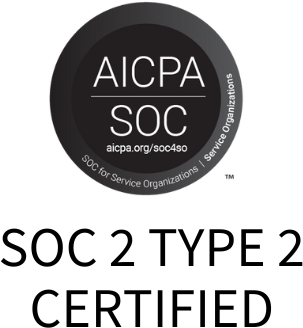
The Key to Reducing No-Shows: Empower your Patients
Medical practices and health systems everywhere struggle with no-shows. When patients don’t attend their appointments, care suffers—and so does the organization’s bottom line.
As many as 30% of patients may not show up for their appointments, creating major gaps in their care. When providers’ schedules aren’t kept full, the effects can ripple through the entire organization. In the U.S. alone, no-shows cost the healthcare industry billions of dollars each year, between lost revenue and patient attrition.
But there is a better way: Engage patients before and after their visit (or no-show) by modernizing your appointment-scheduling strategy. Positive, consistent patient engagement minimizes no-shows because patients are more likely to show for appointments when they feel respected and valued while receiving care.
Here are five ways you can reduce no-shows at your organization and give patients the digital-first experience they expect.
Empower patients by letting them schedule their own appointments
Many healthcare organizations still schedule all of their patient appointments by phone. Appointment call centers can become overwhelmed in the process, leading to long hold times and a poor overall patient experience.
Online self-scheduling is a tech-enabled alternative that makes booking an appointment easy and convenient. Many scheduling tools allow patients to add their appointment to their calendar app, helping to ensure they don’t forget about their upcoming visit. Allowing patients to self-schedule not only minimizes no-shows but also reduces the administrative burden on staff, which means patients will spend less time on hold if they do need to call their provider’s office, ultimately improving overall patient satisfaction, according to research published in the Journal of Medical Internet Research.
Reduce no-shows through automated appointment reminders
Appointment reminders are critical to reducing no-shows—one study found that when parents of pediatric patients received a text message in addition to a phone call reminder, no-shows dropped by more than 14%. However, manually messaging or calling patients can be a huge burden on staff. When you automate appointment reminders, you ensure that patients receive consistent outreach—and you free up your staff for more complex tasks.
Additionally, when several reminders are sent before an appointment, patients have multiple opportunities to either confirm or cancel their visit, which can prevent no-shows and last-minute cancellations. Reminding patients about upcoming appointments through text messages or email also helps you meet their growing expectations for tech-enabled healthcare services, with the added benefit of improving your organization’s efficiency.
Make sure that your outreach explicitly asks patients to confirm or cancel their appointment through a link in the email message or a text reply. Just as appointment self-scheduling is a best practice, so is online appointment “self-canceling.” If a patient must call your office during business hours to cancel an appointment, it may get put it off until it’s too late.
Telehealth Past, Present, and Future Insights
Telehealth use surged during the first year of COVID-19 and dramatically changed how many of us picture care delivery. But now, as things are returning back to ‘normal’, what does telehealth usage look like? How will it change? Reeya Patel, VP of Health Insights, provides an in-depth overview of telehealth’s journey over the past 3 years.
Convert upcoming visits to telehealth to prevent missed appointments
While high no-show rates for in-person care are concerning for patient outcomes, as well as your bottom line, data shows that virtual visits have the potential to provide relief. A 2020 study in Telemedicine and e-Health found that telehealth visits have a no-show rate of just 7.5%, four times lower than the average in-office no-show rate prior to the pandemic. That difference increased even more during the pandemic, according to the study.
When sending appointment reminders or responding to cancellations, offer a telehealth visit if a patient says he or she can’t make it to the office. Providing a virtual-appointment alternative not only helps that patient get needed care, it ensures retained revenue for that patient’s visit.
Automate the waitlist process to quickly refill canceled appointments
You can’t prevent all no-shows or last-minute cancellations, but you can respond to them more efficiently. Staff may spend hours each day calling patients to fill cancellations, but automation can accomplish that task in a matter of minutes without requiring any staff effort.
An automated schedule-management tool can turn cancellations into opportunities. When a patient cancels a visit, the tool identifies other clinically relevant patients with upcoming appointments and automatically sends them a text message offering the earlier, reopened appointment slot. The first patient to reply gets that appointment—no waitlist sign-ups, apps, portals or staff work required.
Keep patients engaged with prompt follow-up after they cancel or fail to show for an appointment
Follow-up after a cancellation or no-show is important, not only for patient retention but also to ensure that essential medical needs are addressed before they get worse. Following up within 24 hours of a missed appointment can keep patients engaged in their care. Make sure your message conveys empathy and understanding, emphasizing that their provider wants to attend to their unaddressed medical needs as soon as possible.
Technology and templated messaging can help automate this process and prompt patients to reschedule promptly by offering upcoming timeslots for self-scheduling or allowing the patient to make an appointment request with a quick click.
To learn more about Phreesia and how to reduce no-shows, click here.

